Clancy Tucker's Blog, page 146
July 22, 2018
23 July 2018 - OPERATION WETBACK

OPERATION WETBACK
G'day folks,
“Give me your tired, your poor, your huddled masses yearning to breathe free,” reads the engraving on the pedestal of the Statue of Liberty. But throughout America’s history, poor immigrants have often been exploited for cheap labor and then discarded. Operation Wetback, named for a racist slur, was a massive deportation scheme that embodied this idea.

During the summer of 1954, hundreds of Border Patrol agents descended on cotton and citrus farms, cattle ranches, hotels, and restaurants all throughout the American Southwest. They boasted of nabbing 2,000 undocumented immigrants a day, resulting in the expulsion of more than a million people.
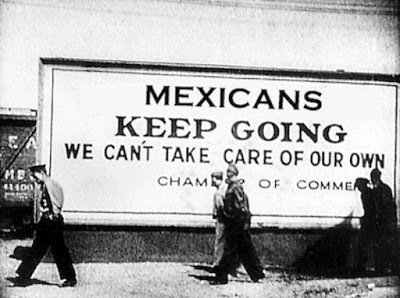
Public parks were turned into detention centers. U.S. citizens who couldn’t quickly produce proof of their citizenship were swiftly deported. Many of those deported were sent to southern Mexico, regardless of where they were originally from, stranding them without family, money, or food.
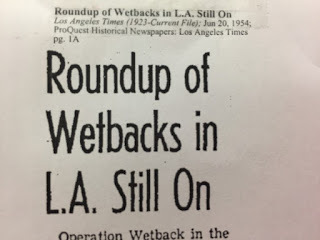
During the 2015 Republican presidential primary debates, candidate Donald Trump praised President Dwight Eisenhower for his implementation of Operation Wetback. He said, “‘I like Ike,’ right? The expression. ‘I like Ike.’ Moved a million and a half illegal immigrants out of this country, moved them just beyond the border. They came back. Moved them again beyond the border, they came back. Didn’t like it. Moved them way south. They never came back.”

Clancy's comment: Mm ... Interesting times with interesting attitudes. Tomorrow I will be one of three judges for the Lions Australian Youth of The Year and I will have the chance to ask the contestants three questions. Here they are:
A. IF YOU WORKED PART-TIME IN A BUSINESS AND YOU NOTICED A WORKMATE BEING BULLIED OR HARASSED BY YOUR EMPLOYER OR A FELLOW WORKER, WHAT WOULD YOU DO ABOUT IT?
B. There are two sections of the Australian constitution that mention race. The first, section 25, says that the states can ban people from voting based on their race. The second, section 51(26), gives Parliament power to pass laws that discriminate against people based on their race. SHOULD THESE SECTIONS OF OUR CONSTITUTION BE REVOKED BY A REFERENDUM, AND WHY?
C. SHOULD AUSTRALIA CONTINUE ITS POLICY OF HOLDING ASYLUM SEEKERS IN DETENTION CAMPS ON MANUS ISLAND AND NAURU? WHY?
Their answers should be interesting, eh?
I'm ...
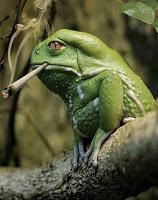

Published on July 22, 2018 15:18
July 20, 2018
21 July 2018 - WINFRED MONCRIEF - CIVIL RIGHTS PHOTOGRAPHER
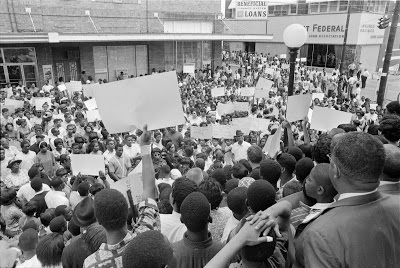
WINFRED MONCRIEF - CIVIL RIGHTS PHOTOGRAPHER -
G'day folks, Winfred Moncrief defied norms and documented civil rights in the segregated South.
During the civil rights era, the Hederman clan owned the largest papers in Mississippi and part of a television station. They owned real estate and a printing business. They sat on the board of a bank, the capitol’s chamber of commerce, and in the pews of First Baptist Church, alongside Governor Ross Barnett.
Through the Clarion-Ledgerand the Jackson Daily News, the Hederman family, which had crawled out of the countryside and climbed up the ladder from the printing presses and into ownership a few decades earlier, promulgated inflammatory rhetoric to keep the flame of segregation burning bright. Their views became the common currency of barbershop talk and sidewalk gossip, their market penetration a hand around the throat of any politician within editorial reach. Working secretly with the Mississippi State Sovereignty Commission (MSSC) and publicly with Citizens’ Councils, their media outlets fought against the civil rights movement on and off the page.
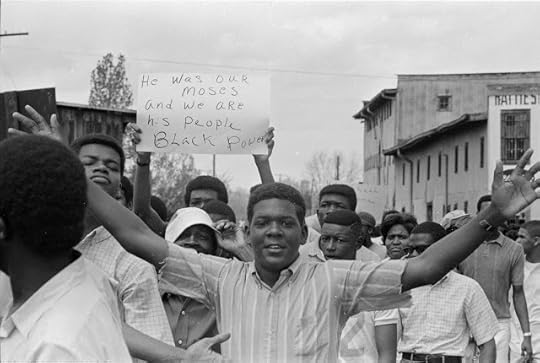
Their news coverage wasn’t much more comforting. The Clarion-Ledger, for example, published the names of suspected NAACP members, effectively putting targets on people’s backs, while the Jackson Daily News issued inflammatory editorials against the federal government’s attempts to open Mississippi’s “closed society” and posited that crime rates in northern cities were the direct result of integration. Both dailies raged violently against “mixers,” outsiders coming into the state to support civil rights causes; local blacks ended up on their pages when arrested, or not at all.
In 1960, the Hederman empire expanded its holdings, acquiring the HattiesburgAmerican. The paper had been segregationist before selling out to the Hedermans, but within the context of 1960s Mississippi it was considered fairly balanced.

For example, it published letters by an African American named Clyde Kennard during his repeated attempts to enroll at the all-white Mississippi Southern College, which happened to be the alma mater of the paper’s chief photographer, Winfred Moncrief. The paper covered Kennard’s arrests for what were later found to be a series of false crimes orchestrated by the police and the MSSC.

On October 28, 1965, Moncrief photographed a man named Robert M. Shelton, imperial wizard of the United Klans of America, as he signed autographs at a KKK rally in town. On April 8, 1968, he photographed protest marches winding their way through Hattiesburg in the wake of MLK’s assassination. Whatever his personal feelings or politics, Moncrief hit the streets and covered the news. The archive of his work showcases his professional integrity regardless of subject matter. His goal was to capture events from all sides, using changes of camera position and adjustments of lighting and contrast.
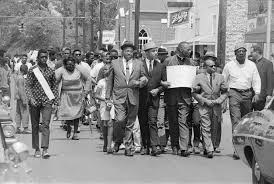
Moncrief worked at his hometown paper for a total of 15 years, while moonlighting for the Associated Press and United Press International and filing with Timeand Life magazines on occasion. He won awards for reportage, and commendations in his subsequent public relations career. And through it all, until retiring in the early nineties, he taught photography and journalism part-time at several southern Mississippi colleges. In a state where you couldn’t always believe in institutions or the gatekeepers who controlled them, Moncrief at least believed in the power of the press.
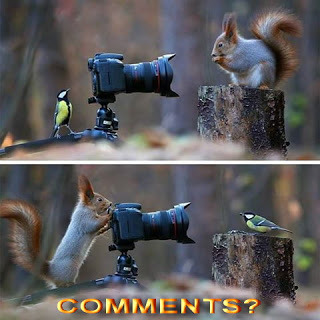
Clancy's comment: Good on him. He was a true photographic journalist.
I'm ...


Published on July 20, 2018 14:59
July 19, 2018
20 July 2018 - GREAT QUOTES FROM AUTHORS

GREAT QUOTES FROM AUTHORS
G'day folks,
You writers might appreciate some of these quotes.
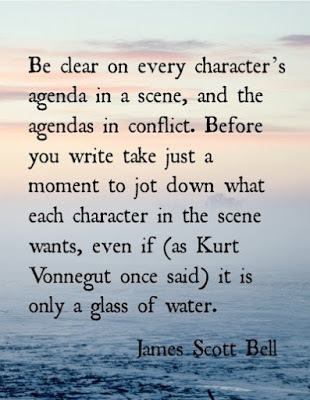
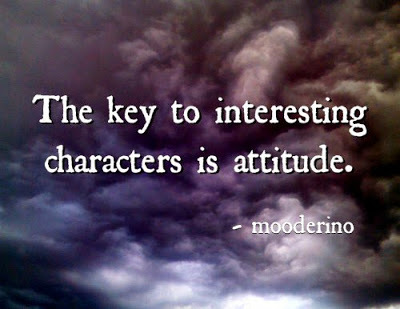
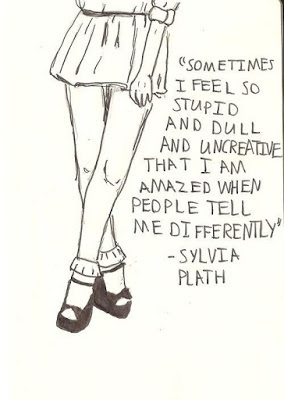
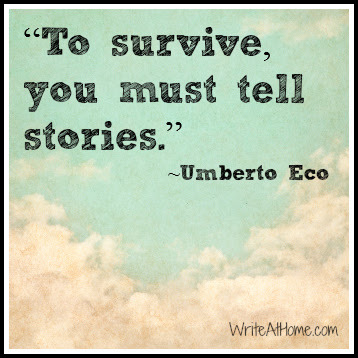
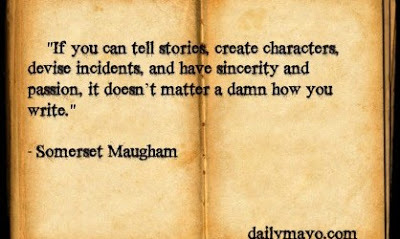


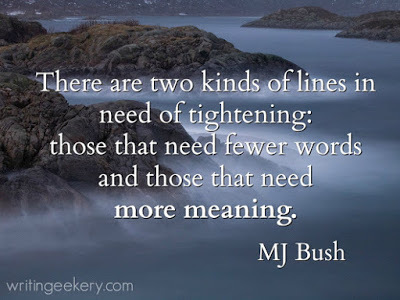
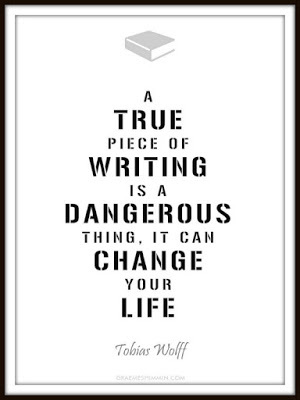
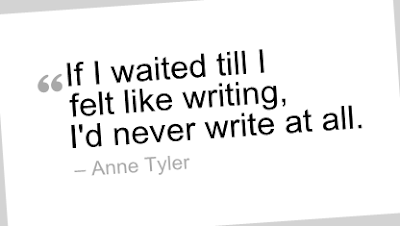
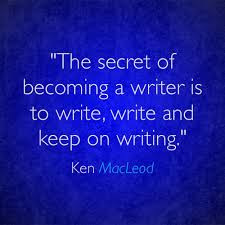
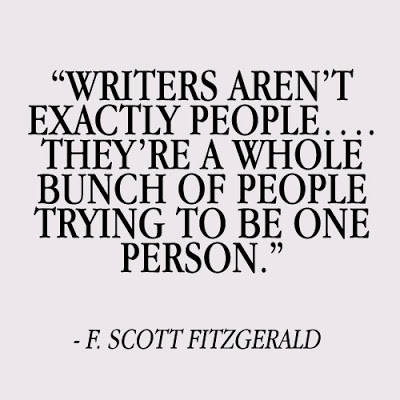
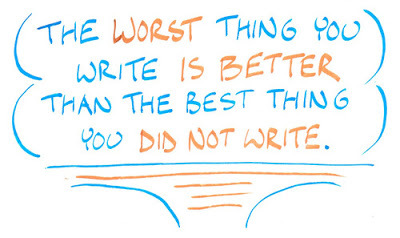
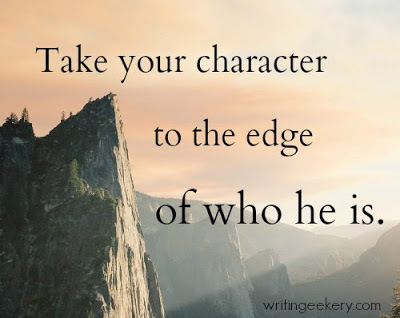
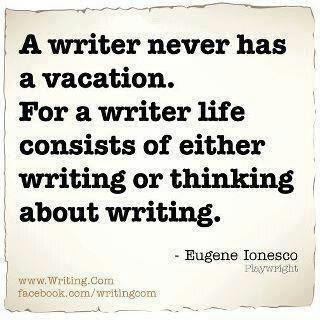

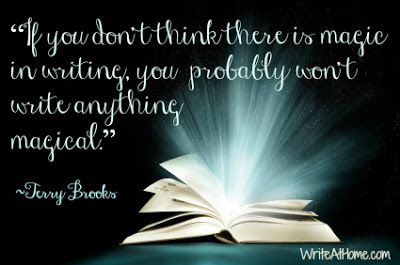
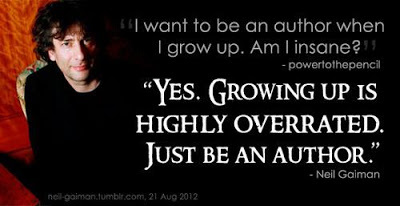
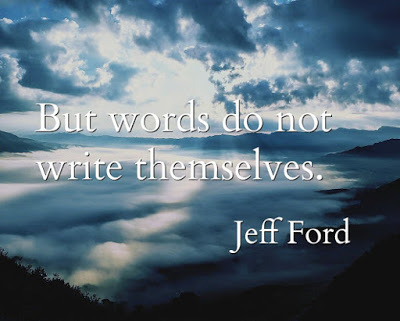
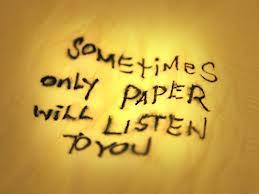
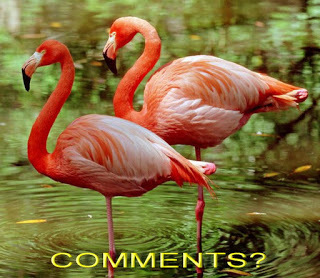
Clancy's comment: Anything you can add to these?
I'm ...

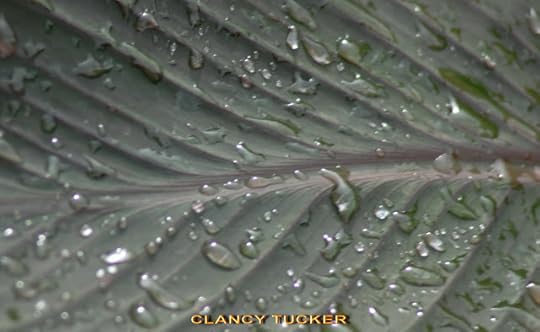
Published on July 19, 2018 16:02
July 18, 2018
19 July 2018 - THE CUTE LADYBIRD
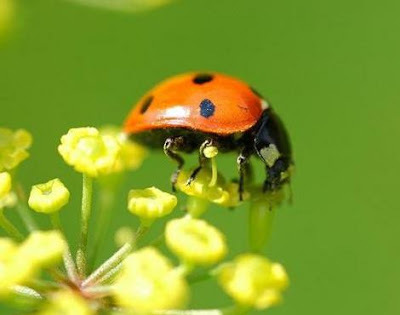
THE CUTE LADYBIRD
G'day folks,
No doubt you have all seen these cute things, but what do you know about them?
The ladybird (also known as the ladybug) is a small colourful beetle found all around the world. There are thought to be more than 5,000 different speciesof ladybird in the world, with more than 450 speciesfound in North America alone.
The ladybird is best known for it's spotted body (normally red and black, but often orange and yellow are found), and their ability to rid gardens of their aphid pests effectively. It is thought to be good luck to find that a ladybird has landed on you, and most definitely bad luck if you then squash it!

Ladybirds are small sized insectsrarely growing to more than a centimetre in length. Ladybirds have size legs that are black in colourand their brightly coloured shell, protects the wings of the ladybird which are concealed beneath the spots.
Ladybirds are known to hibernate once the warm summer weather begins to cool. Ladybirds will hibernate in large groups in sites which are used year after year, and ladybirds are thought to hibernate in this communal fashion in order to increase their chances of surviving the cold winter. It is thought that pheromonesare released by hibernating ladybirds which attract other ladybirds to hibernate in the same place.

Ladybirds are fearsome predatorswithin their environmentand are known as gardener's friends as they munch all of the tiny pests that eat the plants. Ladybirds primarily eat aphids, greenfly, plant-lice and other small insects. It is thought that the average ladybird eats more than 5,000 aphids in just one year.
Ladybirds are prey to a number of animalsin their environmentthat include birds, reptiles, amphibians, small mammals, rodents and other insects. It is thought that the bright colour of the ladybird is used to deter hungry predatorsas they think that the ladybird will taste disgusting or is poisonous.
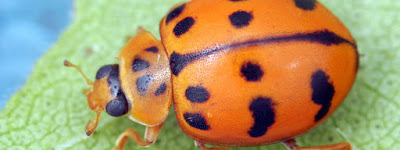
The female ladybird can lay more than 2,000 eggs in one year that hatch in just a few days. The ladybird larvae hatches out of the eggs and looks nothing like an adult ladybird as the ladybird larvae is long in shape and is generally one colour. After a couple of weeks, the ladybird larvae evolves into a ladybird pupawhich is about the same size and colour as an adult ladybird but has a protective layer surrounding it, until it has developed its wings. Once the ladybird pupa has developed, it breaks out of the skin surrounding it to become an adult ladybird.

Due to climate changes and habitatloss, the ladybird is now considered to be one of the animal speciesthat is threatenedwith extinction. It has been noted that ladybirds are particularly sensitive to temperature and will die from dehydration if it is much hotter than it should be.
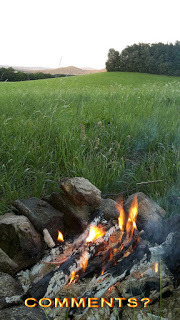
Clancy's comment: Cute, eh?
I'm ...
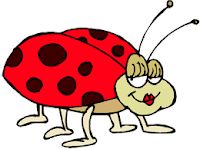

Published on July 18, 2018 14:44
July 17, 2018
18 July 2018 - 'GUNNEDAH HERO' - by CLANCY TUCKER - BOOK REVIEW
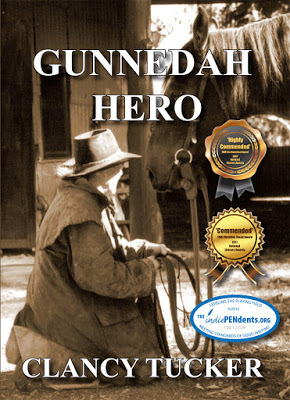
'GUNNEDAH HERO' by CLANCY TUCKER - BOOK REVIEW -
G'day folks,
Well, here is a top 5-star book review from a recent guest on my blog - Diana Sobolewski from Canada. This was my first book and it went on to win two awards in the Australian National Literary Awards - as a paperback and as a manuscript. Many thanks to Diana for taking the time to not only purchase my book, but also to read it and write a review on Amazon.
So, here it is ...
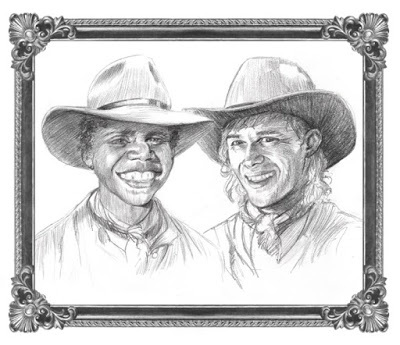
Customer Review 5.0 out of 5 stars An inspirational and entertaining read for young readers and adults alike!By Amazon Customer on February 27, 2018Format: Kindle Edition |Verified Purchase
Fourteen year old Gunnedah 'Gunnie' Danson inherits a manuscript written by his great-great-great grandfather. As he's reading about Smokey 'Gun' Danson's adventure when he was exactly the same age, Gunnie takes us along for the ride.
Award-winning Australian author Clancy Tucker tells two stories at once going seamlessly between drought-ravaged Australia in 1910 and modern-day Australia where farmers also face hardships due to drought. And Mr. Tucker involves the reader with the lives of the two boys simultaneously.
Tasked with a job that would normally have been undertaken by older 'drovers' Smokey moves cattle away from his homestead Wiralee Station to a destination many towns away with only his trusty dogs, a pack-horse and the horse he rides. Along the way he learns the value of his animals, to trust his instincts, and the meaning of friendship. In the process, he is introduced to Aboriginal 'bush magic' for food and medicine. Smokey's journey is fraught with danger; the terrain, the elements, wild life and some unscrupulous characters. But the young man finds his inner strength and shoulders his burden well to surpass the expectations of family, friends and his love interest Molly.
With a selfless act and guided by a true sense of what is the right thing to do, Smokey is rewarded for his good deed and recognized for the hero that he is. That in turn allows him to repay some kindnesses and ensure that his family's land and homestead withstand the threat of drought in the future, and that the family business thrives for generations to come.
Gunnie reading Smokey's detailed account from Wiralee Station, the exact place his great-great-great grandfather had been so passionate about, comes to share in that passion. When Wiralee is under threat once more, Gunnie vows to protect it and Smokey reaches out from the past to help.
Gunnedah Hero is about perseverance, respect, generosity and believing in yourself; woven into a delightful, heartwarming, hopeful tale that is just plain fun to read. The author infuses the story with 'Aussie' expressions and vivid descriptions that really bring it to life and give it that sense of time and place.
I think this book is classroom-worthy. I would also encourage adults to read it and to get it for the young people in the family. What a wonderful way to encourage young people to read and bring about some great discussion.
Love ya work Mr. Clancy Tucker and I'll be reading the sequel 'A Drover's Blanket' next!
BOOK'S BLURB:
Fourteen-year-old Gunnedah ‘Gunnie’ Danson has a 500-word assignment on drought. His late grandfather has left him a box containing a manuscript. It’s been written by Gunnie’s great-great-grandfather, Smokey ‘Gun’ Danson after his journey up the long paddock during a harsh drought as a fourteen-year-old drover in 1910. At the back of the manuscript is an envelope. It’s NOT to be opened until Gunnie has read the entire story.
Gunnie spends the weekend at Wiralee Station; a cattle station that’s been in the family since 1848. There, he reads the awesome manuscript and learns of Smokey’s adventurous journey.
Gunnie overhears several secretive conversations. His snobby Aunty Kate wants to divorce his uncle and sell Wiralee Station. He finishes the manuscript and opens the mysterious envelope. Will it legally prevent his aunt from selling Wiralee Station?
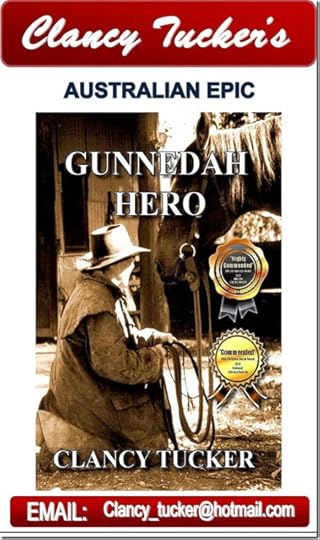
DIANA SOBOLEWSKI AMAZON REVIEW PAGE
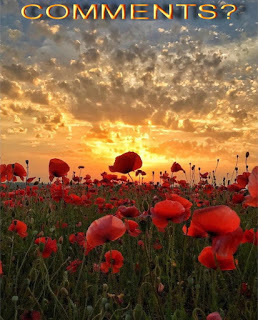
Clancy's comment: Many thanks to Diana for a splendid review. Love ya work, Diana Sobolewski. Gunnedah Hero should soon be a movie, so watch this space. Paperbacks and e-books are available. Just head up to the right hand side of this page and buy a copy. You won't regret it.
I'm ...


Published on July 17, 2018 15:06
July 16, 2018
17 July 2018 - EDITH ROOSEVELT
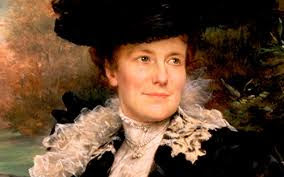
EDITH ROOSEVELT
G'day folks,
Edith Kermit Carow Roosevelt was the second wife of President Theodore Roosevelt and served as First Lady of the United States during his presidency from 1901 to 1909. She was the first First Lady to employ a full-time, salaried social secretary.
Edith Roosevelt (1861-1948) was an American first lady (1901-09) and the second wife of Theodore Roosevelt, the 26th president of the United States. Childhood sweehearts, the two were separated for a number of years before resuming their romance and marrying, two years after the tragic death of Theodore’s first wife, Alice. In 1901, the Roosevelts entered the White House, which Edith and Theodore quickly realized could not accomodate their large and boisterous young family. They secured permission and funding from Congress to extensively remodel the building, including construction of the new West Wing, which separated the private family quarters from the presidential offices for the first time.

The second child of Gertrude Elizabeth and Charles Carow, scion of a successful New York City-based shipping firm, Edith Kermit Carow was born into a world of privilege. She received an extensive education in writing, literature, languages and the arts, and learned the proper social behavior expected from a young woman of high society. But all was not rosy within the Carow household due to Charles’s drinking and gambling habits, and his sudden loss of income in the late 1860s forced the family to live with relatives for a few years. Deeply ashamed of her father’s failures, Edith later destroyed much of his surviving correspondence and records.
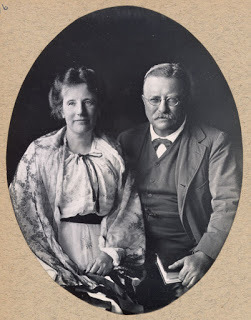
Edith was schooled in the Roosevelt household alongside the future president’s siblings, and accompanied the family on their summer trips to Oyster Bay, Long Island. Their frequent proximity fueled romantic sparks, though their relationship cooled after Roosevelt’s sophomore year at Harvard University, and he soon began his courtship of Alice Hathaway Lee. A year and a half after his first wife’s death, Roosevelt reconnected with Edith at a sister’s home. Engaged in November 1885, they agreed to keep their status a secret while Edith’s mother went through with plans to move the family to Europe. The Roosevelts finally tied the knot in London on Dec. 2, 1886.
She established a precedent by hiring the first federally-salaried White House social secretary to answer mail, convey news to the press and help run the household. Edith also honored her predecessors by hanging portraits of former first ladies a ground-floor corridor of the White House. From a policy standpoint, Edith’s most important contributions came via her private correspondence with Cecil Spring-Rice, a junior British ambassador who had been the best man at the Roosevelts’ wedding. Continually apprised of the ongoing Russo-Japanese War through his wife, the president negotiated an end to the conflict, for which he earned the Nobel Peace Prize in 1906.

The Roosevelts traveled extensively after leaving the White House in 1909, with Edith escorting her husband through several South American countries before his departure on an expedition into the Amazon jungle. Following the former president’s death in 1919, Edith continued her world tour by visiting Europe, South Africa, Asia, Hawaii and the West Indies, later recounting her experiences in the 1927 travelogue “Cleared for Strange Ports.” Edith also edited a history of her genealogy with her son Kermit and assisted the aging members of her husband’s “Rough Riders” contingent during those years.

Edith resurfaced in the public eye as an opponent of Franklin D. Roosevelt’s 1932 presidential campaign. A proud Republican, she chafed at what was misconceived to be a close relationship with her niece Eleanor’s husband, and spoke at a rally for the incumbent Herbert Hoover at New York’s Madison Square Garden that October. Edith eventually developed more respect for FDR and his New Deal policies, and maintained cordial relations with that branch of the family. She passed away on Sept. 30, 1948, at her long time home in Oyster Bay.

Clancy's comment: She appears to have been a very sharp lady.
I'm ...


Published on July 16, 2018 14:39
July 15, 2018
16 July 2018 - MARATHON RUNNER WEARS SOCKS AND WINS
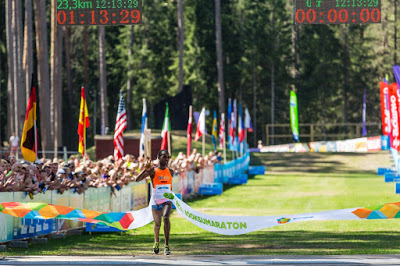
MARATHON RUNNER WEARS SOCKS AND WINS
G'day folks,
Ibrahim Mukunga Wachira, a 27-year-old marathon runner from Kenya, became an overnight sensation in the small Baltic country of Estonia, after winning the 35th annual Tartu Half-Marathon, a 23-kilometer race he ran in his socks.
Just last week, we wrote about the monumental achievement of María Lorena Ramírez, a native Rarámuri woman from Mexico, who won a 50-kilometer ultramarathon in rubber sandals made from used car tires and wearing a long traditional skirt. Today, we cover the amazing story of a man who not only won a 23-kilometer marathon in Estonia, but also set a new speed record, after running with no shoes on. It’s definitely an incredible time for sports, and running in particular.
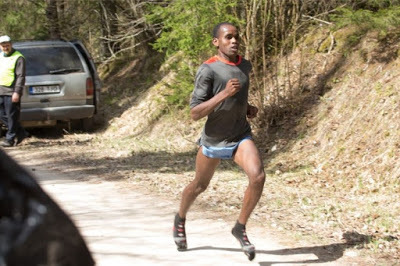
Ibrahim didn’t plan on running the Tartu Half-Marathon, on April 28, in his socks. He arrived at the starting point with his running shoes, but gave them to someone for safe keeping, and just couldn’t retrieve them before the starting whistle. He even told the race organizers about this problem, and they tried to help him out, appealing to the public for a pair of shoes his size. But no one stepped up, so the Kenyan athlete was left with two options, drop out of the marathon, or run in his socks. He went for the latter.
“It was pretty difficult in the beginning,” Ibrahim told Estonian news site Delfi. “Especially on the asphalt, but on the dirt trail it was quite good to run and in the end I got used to it.”
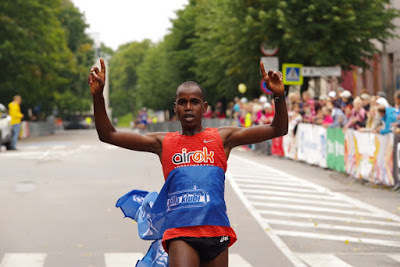
By the 11th kilometer of the marathon, Ibrahim Mukunga Wachira was already leading the race, and he ended up winning over 4 minutes ahead of the runner up. His official time of 1.13.23 was also a new speed record for the Tartu Half-Marathon. Photos of the 27-year-old crossing the finish line in his worn out socks have been doing the rounds on Estonian social media and news sites for a month now, and he has become somewhat of a celebrity.
“When I was running, I forget I don’t have shoes, I just running like I have,” Ibrahim said in a video interview. “I keep in mind, I say ‘I have shoes, I have to go now.'”
It’s hard to believe that just five years ago, Ibrahim Mukunga Wachira was working with his family on a tea plantation at the foot of Mount Kenya, and lived in a modest hut. He had begun training as a long-distance runner, but due to his modest roots, he still had to work in the fields to put food on the table.
His luck changed when he met a fellow runner from a faraway country called Estonia. Tiidrek Nurme immediately saw his potential, and even though they could barely communicate, due to Ibrahim’s poor English, he invited him to his country to be his training partner. They have been friends for five years now, and training together for four years.
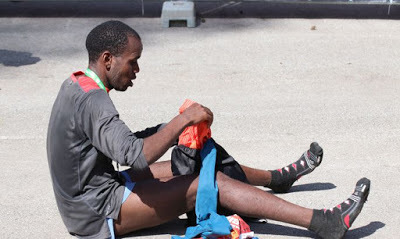
Mukunga Wachira has been traveling back and forth between Estonia and Kenya for years, but he doesn’t mind, as after winning several races around Europe, he now earns more than the average Kenyan, and is able to provide for his family. He loves Estonia, especially the seaside, but hates snow.
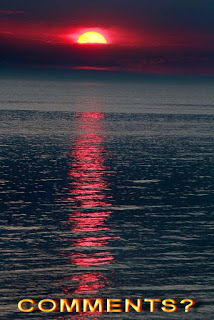
Clancy's comment: Kenyans are brilliant long distance runners.
I'm ...


Published on July 15, 2018 15:24
July 14, 2018
15 July 2018 - MARJORIE BARD Ph.D - GUEST AUTHOR AND FILMMAKER
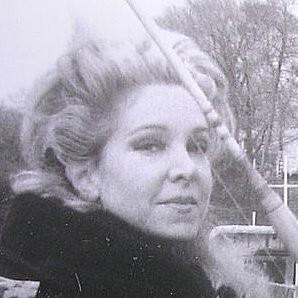
MARJORIE BARD Ph.D - GUEST AUTHOR AND FILMMAKER -
G'day folks,
Today, I interview a very interesting guest from the U.S.A.
Welcome, Marjorie ...
1. TELL US A LITTLE ABOUT YOURSELF AND YOUR WRITING JOURNEY.
I spent the 1st10 years of my life in Brookline (Boston area), with “encouraging” parents (dad a Harvard Med professor and Old English Lit scholar mom) who thought I should investigate the historic city. I spent happy hours in the Public Gardens (Swan Boats!), libraries, art galleries, and harbor restaurants. I didn’t realize I was being primed for a long education!
After a few weeks in kindergarten, my mother was asked to meet with my teacher. (Paraphrased): “Why is Marjorie writing “s” like an “f”? She ignores our books and discussions about simple story themes. She knows how to read and write, but she needs help with the alphabet and writing short sentences. She rambles.” (I was born with a rare phenomenon -- a photographic memory. My teachers had never heard of it, so my mom had to inform every new teacher I learned to read-and-write from a Shakespeare collection and medical books – and mixed-up what I could “see” and “rewrite” from both.) I did collect/save a few children’s books I wanted to pass along to my children (e.g., “Make Way For Ducklings” and “Henry and the Red Glove.”). I still have my grammar school grade reports and while I received all A’s, the teachers’ comments were often less than flattering (However, a photographic memory was an asset all the way through to a Ph.D.!)
We moved to Beverly Hills, CA and I have teen memories of a neighborhood of actors on whom my girlfriends and I could “spy” and obtain personal information. One of my dad’s patients -- a prominent gossip columnist -- paid me in unlimited desserts (an open tab!) at Beverly Hills’ and Hollywood’s soda shops to write about real events from the neighborhood and people working at the nearby studios. (I didn’t receive name recognition, though – for that would give away sources!) I joined my high school’s Drama Club just to write their plays. I don’t remember when I haven’t been writing – schools’ news columns, articles about unusual vacations, rebuttals to city newspaper editors’ articles, etc. As I look back, apparently I had no fear of rejection or entering adult topics not meant to be from a teenager’s POV.
2. WHEN AND HOW DID YOU BECOME A WRITER?
I think I covered that in the first question! However, I did dabble in writing sitcoms for TV shows I liked (when freelance scripts were accepted). In my 20’s, I became a published author of a cultural mystery (under a pen name), a cookbook about desserts, and tried my hand at screenplays for writers who didn’t like that format but wanted to sell their scripts for movies. I’ve only had 2 of my own accepted – for very little money. Naturally, the director altered the content and I barely recognized my stories. They were flops at the box office, so there are no bragging rights! (One which I really had high hopes for -- with actress Gwen Welles – should still be registered with the WGA. Unfortunately, she died of cancer rather suddenly, and I haven’t touched it since.)
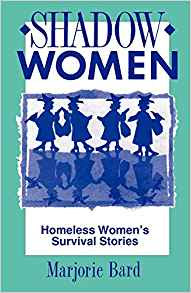
3. WHAT TYPE OF PREPARATION DO YOU DO FOR A MANUSCRIPT? DO YOU PLAN EVERYTHING FIRST OR JUST SHOOT FROM THE HIP?
I don’t follow any rules! I may get an idea for a book and start writing notes. Sometimes it’s a vague outline for chapters if I can foreshadow a plot to a suspected ending – usually a mystery. It’s a bit different if fiction or non-fiction, for if non-fiction, I can’t be creative. Just interesting! I’ve been known to sit in a restaurant and write on paper napkins while eating – sometimes to the dismay of a waiter wishing I would leave. I’ve pulled to the side of a major highway and written on legal pads as huge trucks whipped-by, making my car shake. I have even written on a white skirt when an idea hit as I met a person I wanted to interview but had no pad with me. I tend to be spontaneous with fiction – but very scholarly when involving important research for non-fiction.
My schooling has had an effect on how I prepare for a particular book. If I know a long journal article or conference paper could become a book – I make an outline and fill in content as I find it (references and bibliography). I love the research! If fiction, it means several note pads with pages of scribbled ideas and a lot of material with question marks. I make notes to myself about where to find specific content (the photographic memory!) and if anyone saw the way I “prepare,” I’m sure I’d be called odd/scattered/making no sense! But, it works for me – in fiction. I’m much more organized for non-fiction since I am essentially known as an academic and I do feel the pressure of following strict procedure.
My first non-fiction book (1990) about the lifestyles of stable undetectable homeless women I have interviewed and filmed was noticed by a Los Angeles TIMES staff writer. Her articles paved the way to TV shows (“60 Minutes” the most prominent) and being swamped by directors and actresses who wanted to buy the film rights. I wrote a 2nd book in 1994 about how organizations and communities respond to DV and homelessness…of more interest to professionals than the public and has mainly become a textbook and library edition. (There are others which are out of print now and 3 being updated for publication.)
Based on my personal experiences with DV and homelessness in the ‘70s, I became an ethnographer, infiltrating/mingling with these self-sufficient women as they masquerade in public as being a normal mall wanderer, grocery store shopper, large library/luxury hotel lobby reader. I found some women at racetracks near the stables, chatting with the pros -- so I bought the racing forms and walked around with them – getting to be pals and finally sharing coffee and stories on being homeless. Another “full day” for the undetectable homeless woman is court watching – and discussing cases in the hall with others who find this an exciting event. That’s usually how I meet undetectable homeless men.
Bad weather is a homeless person’s worst enemy, and I fear the end of large climate-controlled malls with upscale dept. stores. They are lifelines to every need a woman has – from free make-up, fully-equipped bathrooms (some with lounges, sofas for napping, and a TV) -- to comfortable benches on differing levels for “people watching.” Endless walking keeps one’s circulation moving, so it’s healthy as well. The best malls have small gourmet food shops which provide ample samples – enough to make meals for a day. Rarely does an undetectable woman spend her days in her car. I’ve found them wandering or sitting in treed cemeteries, outlet-stores towns, beach communities, and 24-hour casinos – and any hotel which is associated with a casino. Their strategies for survival depend on their ability to appear as a homeowner “out for the day” or on vacation.
I only had to stop traveling and masquerading when in my late 70s. For years, I left my cards on every state’s “Welcome To:” Rest Area bulletin boards -- and from those and word of mouth, I have a hotline for emergency needs (e.g.: trapped in a bad weather situation, broken van, taken to jail and needing bail, boondocking places, etc.) I miss the traveling and am working on another book based on my e-doc (on Google Search titled The Undetectable Homeless) of excerpts from reams of filmed interviews from cross-country and extensive East Coast trips.
4. WHAT DO YOU ENJOY MOST ABOUT BEING A WRITER?
I enjoy using my imagination when writing fiction – for that seems to be endless. I think or hear of a topic and if it resonates with some plot and/or characters I have in mind, I make mental notes until I get to a pad and pen. Non-fiction interest is probably due to my high school classes when something in history or a culture hit me as needing exploration. I was fascinated with cultures which were dying-out – traditions and even languages lost as elders passed away and young people were prone to moving to big cities and obtaining good jobs which led them away from the stories “the old folk” told.
Basically, I’m a born storyteller of what interests me! I have never written for money or “fame.” It’s only a fluke my first book about undetectable homeless women (and some men) became a revelation to the public. In 1991, I founded a non-profit org which gave me access to grants and a Board of several previously homeless people who became successful. Some wrote or told of their experiences – promoting the art of storytelling as helping others to “do something” about our still growing stable and hidden homeless population who need affordable housing, appropriate jobs, and social service assistance.
5.WHAT IS THE HARDEST THING ABOUT BEING A WRITER?
Having only 24 hours in a day to do so much I have planned! At 83, my life has been “broken” by an accident of fate: a vicious stalker of now 6 years who has been threatening lives since he was 18 – and is worse at 42. Social media CEOs and moderators have allowed this criminal (court records in most fields of illegal activity) to take over decent people’s lives, ruin careers, separate families, and become a dangerous threat as he states (quote:) “I am a prime candidate for becoming a mass gun shooter.” If I had not been a noted author and filmmaker with a Ph.D. when he wandered into my LinkedIn “Homelessness and Housing Professionals” group, his obscene emails and blogs would probably have been limited to a short time. However, he was and is obsessed with the success I’ve had – while he has had none with 3 attempted “careers” which he brags has made him famous and respected. (He is hated.) He admits he went from a drug-addicted homeless drifter/grifter just leaving a jail sentence to meeting a millionaire who took him in and has gifted him with houses, expensive cars, etc. so he is now also (supposedly) a millionaire – and more dangerous than ever. He destroyed my non-profit org in 2 days by blogging I stole the EIN# from someone else and daily writes filthy libelous content about me. His “life-funder” has mentored him in all forms of hacking and destruction of his victims’ computers. The mentor has ties to Microsoft, Google, and Facebook, so almost all of my saved docs with the name of the stalker have been removed with a message box left by MS stating “the content has been deleted due to being invalid.” Those saved docs included his Gallery of Mass Shooters – whom he lionized with blogs about the similarities he shared with them. Fortunately, I had many docs in hard copy and now save everything he blogs that way. One file cabinet has enough material for a 350 page book.
The worst part of being a writer for me is feeling forced to write a book about this abusive criminal whose only aim in life is to ruin reputations/frighten people so badly they leave the web altogether. His obscene language and libel are allowed by social media CEOs and even the FBI (a longtime file on him). My mission is to stop him by putting his words into a book so someone associated with the Cyberstalking Bill will actually enforce what they enacted. Not all states have stalking laws, so I continue to fight for legislation. It isn’t a choice anymore. It’s necessary – and someone has to do it!

6.WHAT WERE YOU IN A PAST LIFE, BEFORE YOU BECAME A WRITER?
I was already a writer, but I began a career at 20 with an M.A. in Education, teaching in what used to be called a “pre-reform (grammar) school.” Ethnicities were mixed and almost all only knew their mothers – but were latch-key kids who had no actual family to care for them. It was a rewarding choice since I found they liked to hear stories and make craft projects instead of reading and learning math and science. I found ways the principal did not approve of to interest the kids in learning “their way.” Of course, that led to the kids needing to measure and invent things -- and writing about their projects. Finally, the principal asked me to follow the 4th graders to the 5th – unheard of in her career. (But she was miffed at my success as the older male teachers had many students held back.)
I have been a longtime journalist (Los Angeles Press Club member), magazine editor, dissertation proofreader, and a 2-year law student while creating a DV Victim Advocate position at a City Attorney’s Office. I’ve written for small town newspapers about their particular problems, mainly whistleblowing about poisonous ground water, illegal deforestations, and nuclear plant leaks.
7.WHAT IS YOUR GREATEST WRITING ACHIEVEMENT?
I suppose I should be referring to being swamped by directors and actors who wanted the movie rights to my first book about the undetectable homeless. But I don’t feel that way about what I’ve written. I’m ultra-proud of the children’s book series I wrote during my days of living a new self-sufficiency lifestyle on a deserted island during the mid-‘70s. I had been sleeping in my car and staring out to sea during the day, picking wild blueberries and bartering with lobstermen, knitting bait bags and fixing wooden lobster traps for a daily lobster. I began to write about my ordeal – and couldn’t. My mind wandered and I thought about how tiny pets would survive if their cage opened and they had to learn how to grapple with life on a deserted island. So, Geraldine and Jeremy Gerbil became my protagonists in adventures in self sufficiency – solving mysteries which humans couldn’t. Those animal detectives described the almost unknown island’s habitat and ended-up in a nature magazine.
I made enough money to buy necessities and build a solar oven in the sand of my hidden cove so I could bake blueberry cakes and breads to sell to a restaurant in the nearest tourist town. When I left to take advantage of a fellowship offered by UCLA for another M.A. and Ph.D., I felt better about myself than I had when living a “privileged” life.
8.WHAT ARE YOU WORKING ON AT THE MOMENT?
I’m writing/editing 3 books at once. One of the books is my last cultural mystery, for after 3 generations of a niche publishing house, the youngest has decided to close the business and move to Italy to open a restaurant.
9.WHAT INSPIRES YOU?
A hidden ocean cove surrounded on 2 sides by pink granite ledges and forest has always inspired me. However, that’s not an option anymore, so I depend on my rural life with roaming critters and harbor and river views. There is no noise other than animals’ and I’ve rarely seen my 2 neighbors on a private dead-end lane to the harbor. I suspect I have a gene which insists I write about anything which intrigues me!
10.WHAT GENRE DO YOU WRITE?
I’ve written in almost all genres, including children’s books, YA, horror, crime, sitcoms, some haiku, and non-fiction. I have never had the desire to write a “Star Wars” or zombies type of story. I do have a romance novel to write, but I have put it off for decades. I begin and realize I’m re-living my own experience which I have kept a secret. It happened when I was homeless and masquerading as a tourist/adventurer. I find I’m blocked from writing about a very personal relationship which meant choosing to start life anew with a scientific researcher from another country who was working in a lab near my area or returning to CA and grad school. I still am not positive I made the right decision. (I could have re-married and written as well, but I decided to make sure I’d always have the degrees to get a well-paid job! I had learned to respect earning and keeping my own money.)
11.DO YOU HAVE ANY TIPS FOR NEW WRITERS?
I think the most important tip is to write about what interests you and know about. However, imagination unveils fantasy, so that also creates fiction and is not to be ruled out! It is unfortunate many writers believe they have the next Best Seller. They undoubtedly do not. Plus, I’ve seen so many instances of self-published books with terrible grammar, I wonder if our schools still teach proper English. Necessary: obtain a professional editor – despite my own choice!
12. DO YOU SUFFER FROM WRITER’S BLOCK?
Not really. I’m lazy and if I’m not inspired, I don’t try to force myself. I get stumped sometimes when searching for red herrings or clues in a mystery, but I can’t think of a time when it bothered me. I just wait for something to come to mind. Non-fiction is research, and I don’t seem to be blocked from the desire to “know more.” Plus, there is always an art project to work on or a gourmet recipe to test!
13. DO YOU HAVE A PREFERRED WRITING SCHEDULE?
I don’t believe – for myself – in forcing a time to write. I never schedule! I have to wait for an inspiration and return to writing when I’m hit with something to add, fix, or delete. A place, an aroma, something I hear or see or remember will come to mind and I’m ready to continue. I would make a terrible office worker – watching a clock and knowing I had to complete something “by 5 pm.” How can a schedule produce creativity? And why would I want to commit to a schedule when my best writing is spontaneous or research-inspired?
14. DO YOU HAVE A FAVOURITE WRITING PLACE?
Yes, but I can’t get there anymore! It’s any private ocean cove with no one else around. Or, any restaurant when I suddenly find I have an idea which needs to be fleshed-out right away. Food seems to be “inspiring.” But over the years, I’ve written anywhere when I get that urge….
15. WHAT IS YOUR GREATEST JOY IN WRITING?
It’s just within me. I feel wonderful/excited/transformed to another place when writing. I’m not consumed with the desire “to be read.” I have boxes of hard-copy novels which I will never try to publish. I think they are good reading material, but only submit mss which I feel are absolutely worthy of sharing.
16. WHO IS YOUR FAVOURITE AUTHOR AND WHY?
I love the Dorothy Sayers books about Lord Peter Wimsey – especially the trilogy with Lord Peter and Harriet Vane. I like Sayer’s writing style and the occasional Latin phrases Lord Peter throws in. I also love to read Tony Hillerman’s Native American novels. When traveling, I take Thoreau’s Walden and an Edgar Alan Poe book. My creative mood changes with intolerable weather!
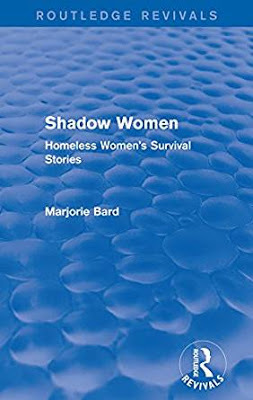
17. WHAT’S THE GREATEST COMPLIMENT YOU EVER RECEIVED FROM A READER?
Several women have written and called who have experienced being a stable undetectable homeless woman and praise the way I have documented their life stories. Those are serious compliments.
18. WHAT WAS THE WORST COMMENT FROM A READER?
A few men have insisted these women don’t exist or just like to dress up and play games to fill an imaginary lifestyle. They deny “60 Minutes” and my books as fiction. But they admit they know someone who has lost everything and is doing much the same things as “my women” do. My stalker goes to every online book seller and reviews my books this way: “She’s a psycho liar and 100% insane. And she’s really X (a successful filmmaker he hates.) Don’t buy her books.” However, I doubt he has ever read anything I’ve written. He is a textbook case of a petty, jealous narcissist who constantly takes Selfies trying to look like a movie star: shades, leather clothing, expensive jewelry, and a cigarette dangling from his lip. If he can include a stack of $100 bills and his BMW in a shot, he will. Considering he is a textbook case of a potential killer, I try to ignore his presence in my life – but he is that shadow of evil which I’ve never encountered before. It can be disconcerting – and everyone who has encountered his wrath has reason to believe he will “snap.” 19.WRITERS ARE SOMETIMES INFLUENCED BY THINGS THAT HAPPEN IN THEIR OWN LIVES. ARE YOU?
I think I’ve made that very plain! If it hadn’t happened to me, I wouldn’t have written books about becoming independent/self-sufficient when used to a “normal” life. I know my topics because I’ve lived them. When I write fiction, though, I don’t think my storylines reflect anything about/in my own life.
20. OTHER THAN WRITING, WHAT ELSE DO YOU LOVE?
Art projects -- e.g., many large welded copper/brass/steel flowers-and-leaves as waterfalls and creating gourmet meals. When able, traveling to see how people live and work in places I would never consider as my own home or town. I’m drawn to oceans and lobstering communities. I had planned to “retire” to coastal Maine, but the winters have become too much for me to handle.
21. DID YOU HAVE YOUR BOOK / BOOKS PROFESSIONALLY EDITED BEFORE PUBLICATION?
I have always edited my own books and no publisher/editor has ever suggested any changes. I suspect I can thank my mother for providing a very early education in proper grammar, etc.
22. DESCRIBE YOUR PERFECT DAY.
I would wake up staring out to sea, gulls swooping to fish for their breakfast. I would have blueberries to make bread and fresh coffee to take to the beach. No one else would be around to distract me and I would either have a book to read or be in the process of writing one. I’d walk the beach, looking for sea glass and unusual driftwood, dragging my “finds” back to my house and sort it all while listening to classical music. I’d probably go to the nearest lobster pound and buy a huge-clawed 2-pounder for lobster rolls, chowders, and lobster mac ‘n cheese casseroles. In the evening, I’d listen to world news and be happy I’m in the U.S.A.! I’d probably fall asleep watching one of my favorite old movies on VHS tapes or DVDs…in front of a fireplace.
OR, I’d like to spend almost every day at Los Angeles’ huge Farmer’s Market on 3rd and Fairfax – sampling everything while I write and listening to the CBS writers who used to meet and snack there during breaks. It has undoubtedly changed since I last was there, but it’s how I remember it in the ‘90s, The atmosphere was an incentive to write about anything interesting. International tourists would flock there on Hollywood bus tours and the differences in responses/attitudes were either humorous or unusually annoying!
23.IF YOU WERE STUCK ON A DESERT ISLAND WITH ONE PERSON, WHO WOULD IT BE? WHY?
Hmmm. If I were much younger – as a teen or in my very early 20s – my choice would be different. But now I’m a realist. I’d want a specialist in survival strategies – a man who can climb trees for fruit, start a fire with two sticks, build a shelter and then a boat to get us safely back home. If I had to name a person, it would NOT be another writer to chat with! It might be Mel Brooks or someone with a wonderful sense of humor to keep us laughing. It wouldn’t hurt if he was an amiable gourmet cook. (I did say “he,” didn’t I? I guess I still like male company! However, I do have many female friends.)
24.WHAT WOULD YOU SAY IF YOU HAD THE CHANCE TO SPEAK TO WORLD LEADERS?
“Wise up. If you all don’t work together right now, this planet will soon be dead. You will suffer as much as anyone else left alive.”
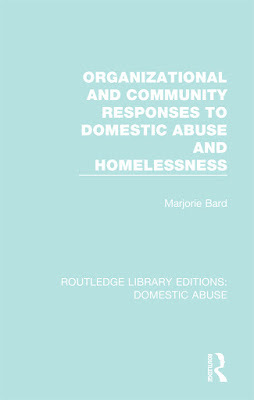
25.WHAT ARE YOUR PLANS FOR THE FUTURE?
Stay healthy and able to write as long as possible! (Remember, I’m 83!)
26.WHAT ARE YOUR VIEWS ON BOOK TRAILERS? DO THEY SELL BOOKS?
I have never even thought about book trailers. I’ve never seen one or intend to use same. I know it sounds peculiar, but I’ve never written to “sell.” If my books are good enough, they will be found for interesting reading or used as textbooks. I like to film – with professional videocams -- but I lack computer tech ability. For writers who can make videos about their books, I hope they don’t depend on trailers for significant added sales. The topics, once seen, may not create a desire to purchase the book. If I didn’t like the trailer, I wouldn’t want to know anything more about the book! I suppose it’s a gamble, but I’m sure trailers will become more popular. Technology rules! Most writers seek new marketing strategies – and that’s a good thing!
27. DO YOU SEE YOURSELF IN ANY OF YOUR CHARACTERS?
Perhaps strong women who try to solve their own problems. My female protagonists or antagonists are really nothing like me – in fiction. The women I meet and interview have one thing in common with me: the desire to survive and thrive.
28. DOES THE PUBLISHING INDUSTRY FRUSTRATE YOU?
Oh, yes! More than frustration. I see piracy accepted and contracts becoming almost worthless. Indie books will undoubtedly become more popular as traditional houses want blockbusters – unfortunately mainly about corruption. Agents will disappear as there are few publishers who want unknowns and the brilliant, popular authors will fignt for bigger advances – which may break the publishers’ banks.
29. DID YOU EVER THINK OF QUITTING?
Quit writing? I’ll be coming back from the dead with news about what it’s like. Long ago, I created my own cartoon block titled “Gravely Speaking.” They have been published occasionally in writers’ and popular magazines and I love making up the comments by the residents of a tacky cemetery. The problem is my lack of any real ability to draw! I may do another in the series – if I have time!
30. WHAT WAS YOUR FAVOURITE MANUSCRIPT TO WRITE? WHY?
My newest cultural mystery about a dying part of a country taken over by Russia and its traditions. One of a few family groups migrated to the U.S. and ended up (long ago) in the exact place I was living at the time. I couldn’t believe in the synchronicity! (Maybe whatever is being written at the time is one’s favorite?)
31. HOW WOULD YOU DEFINE ‘SUCCESS’ AS A WRITER.
For myself, it isn’t about money or fame. I think most authors believe their work is superior and will make them a lot of money and their names will become household ones as authors. I’m a realist. Success to me is all about making sense out of a personal or social problem and solving it in writing. And, of course, using the whimsy I find in almost everything!
32. WHAT SHOULD READERS WALK AWAY FROM YOUR BOOKS KNOWING? HOW SHOULD THEY FEEL?
For fiction – enjoyment. For non-fiction – learning something new and interesting – or important. For all: “a rewarding experience.”
33. WOULD YOU LIKE TO HAVE YOUR BOOKS MADE INTO MOVIES? EVER WRITTEN A SCREENPLAY?
I’ve been writing screenplays off and on for years. One of my books did become a film. It was ruined, of course, since it was drastically altered by the director and added screenwriters. I barely recognized it and wouldn’t suggest anyone watch it. The rest of my mss? I would like my best “story” to be made for others to view as a movie – if I could have creative control…which is an impossibility!
34. HOW MUCH THOUGHT GOES INTO DESIGNING A BOOK COVER?
I have never had that opportunity. My publishers use their own artists or for libray and textbooks, they use plain covers. I have a funny story about book covers: My first publisher about the undetectable homeless had their own artist. She apparently did not read one word of my book and the cover is of “bag ladies”/“street people” who look a bit insane with birds on their heads and carrying garbage bags. I was never offered a peek of the cover, so when I saw it produced and advertised, my heart sank to my feet. Who would buy another book about “street people”? I had taken years to find those women who were so different – and the artist ruined my project. But – the cover was soooo bad, it caught attention and it didn’t make any difference in sales -- especially when explained by newspaper articles, TV shows, and finally, “60 Minutes.” It proves covers don’t always predict sales.
35.WHAT’S YOUR ULTIMATE DREAM?
At my age, to be healthy and “win” enough money to return to Beverly Hills and go to the Farmer’s Market every day to write! However, I don’t buy lottery tickets or enter contests, so it really is a “dream.” I’d love to be the first person to “come back” and see/write about what has happened to this fragile world which we are slowly destroying. I’m sure it would be a very short visit….
36.WRITING IS ONE THING. WHAT ABOUT MARKETING YOU, YOUR BOOKS AND YOUR BRAND? ANY THOUGHTS?
I know other writers do market their books, have a “brand,” and create their own blog pages. They must receive some publicity re sales. I don’t know why it doesn’t interest me. I never thought of being on TV as “marketing” myself since “60 Minutes” (and a few other TV hosts) requested an interview. (I refused other offers since the hosts offered nothing to the women who gave up their anonymity just for the host’s ratings.) I have a LinkedIn Profile page (when the stalker doesn’t delete my photo and content). I have shared 2 book titles to my Facebook page just to “have something there.” I only rarely go to FB and don’t participate because my stalker’s boyfriend works there now and removes anything I write on my Home Page. He used to work at Google and thus he is responsible for my usual Google Search listings being deleted. Right now, all 30+ of my academic journal articles are gone and have been replaced by the stalker’s filthy, libelous, frightening blogs. No one cares – Google or the FBI (where he has a lengthy file of misdemeanors and felonies. If the FBI is as corrupt as they seem, we can count on more suicides and killings and no mass shooters caught before they act.) THAT would be “my marketing plan”: to make sure the country knows who is bound to become another mass shooter. If my book about my stalker who likes to admit his hatred for everyone who doesn’t praise his faked “work” becomes well read, I’ll be satisfied.
I’m not sure if an old “60 Minutes” segment rarely seen on a YouTube is “marketing.” I didn’t upload it, so I didn’t attempt to “market.”

37 ARE YOUR BOOKS SELF-PUBLISHED?
No. I have had several traditional publishing houses request my work. I don’t know anything about self-publishing and frankly, have no interest in learning about how to do same. My computer skills are basic Word – and nothing else. I can’t imagine any interest in anything but seeking a traditional publisher – and being rejected is OK if I can’t find a suitable house. Now – that’s AGE talking! It would be different if I were, say, in my 50s. Then I might be interested in taking classes in computer usage – but I doubt it! I’m not a tech person.
38. DESCRIBE YOURSELF IN FIVE WORDS.
Empathetic. Creative. “Nice.” Intelligent. Patient
39. WHAT PISSES YOU OFF MOST?
Social Media. It’s more destructive than any mode of “socializing” and the cause of unnecessary cruelty, depression, and suicides. I believe in face-to-face conversation or telephone calls and emails from friends. Letters seem to have lost favor! Is it true no one has time to write anymore? NO. People can spend all day on Facebook writing their darkest secrets to strangers who may be in prison for felonies involving child trafficking, drug sales, or murders. Too many social media writers have fake names and false backgrounds. Why do CEOs of major social media sites refuse to monitor known bully-stalkers? Traffic = money. I’m disgusted with their hunger for more money than encouragement for humanitarian work. (I know of only 1.) And who needs 20 billion dollars? Think of how many people could be fed all over the world or how to house everyone properly – or provide safe water for everyone to drink….No one should get me started on the topic of social media!
40. WHAT IS THE TITLE OF THE LAST BOOK YOU READ? GOOD ONE?
I challenged myself to re-read Abraham Kaplan’s “The Conduct of Inquiry.” Still terribly inconsistent, irrational in my estimation – and a complete waste of my time! Immediately after completing that tome, I picked up Agatha Christie’s “Evil Under the Sun” just to feel normal again.
41. WHAT WOULD BE THE VERY LAST SENTENCE YOU’D WRITE?
I’ve mainly enjoyed “life,” but if I wasn’t enjoying it, I tried to make it better and interesting – an adventure! (A P.S would be: Get my vicious, dangerous stalker into a mental ward with no ability to communicate with anyone ever again!)
42. WHAT WOULD MAKE YOU HAPPIER THAN YOU ARE NOW? CARE TO SHARE?
At 83, obviously, I’d like to be much younger and healthier, but that’s not one of nature’s (current) plans for humans. I’d like to complete books I’ve been working on and have them published. I don’t care if no one reads them! I just want to feel I accomplished what I started with great enthusiasm. And a pound each of marzipan and chocolate-covered halavah which wouldn’t send me into a coma!
43. ANYTHING YOU’D LIKE TO ADD?
A Thank You for this opportunity to write what I feel….

AMAZON

Clancy's comment: Thanks, Marjorie. We hear you loud and clear. Stay positive and keep going.
I'm ...


Published on July 14, 2018 15:55
July 13, 2018
14 July 2018 - WEIRD AND WONDERFUL STUFF
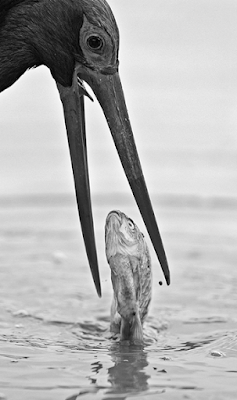
WEIRD AND WONDERFUL STUFF
G'day folks,
We all need a laugh, so here are some weird and wonderful things.
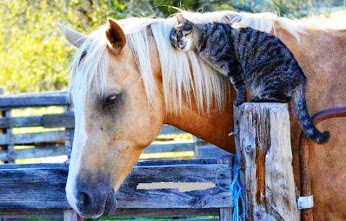
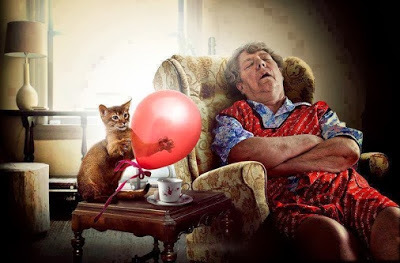
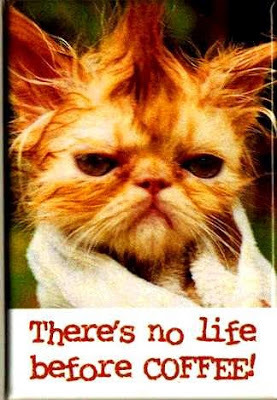
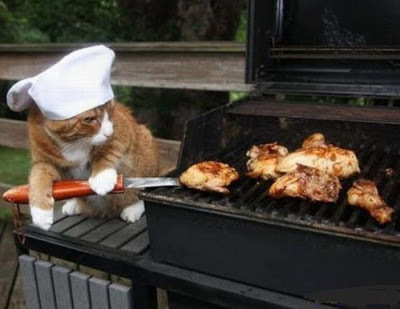

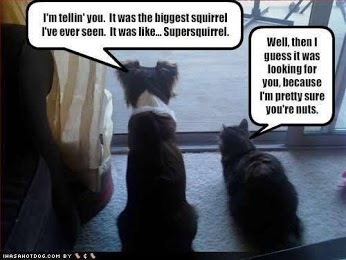


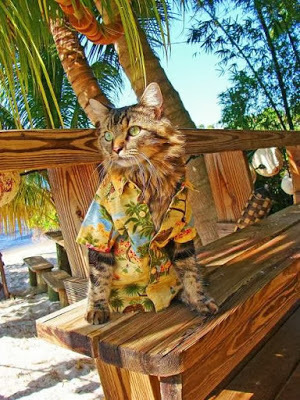
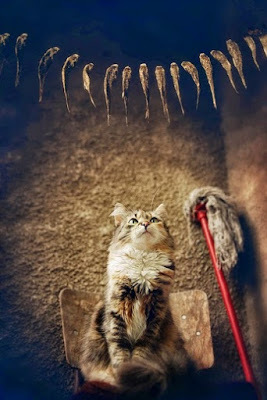
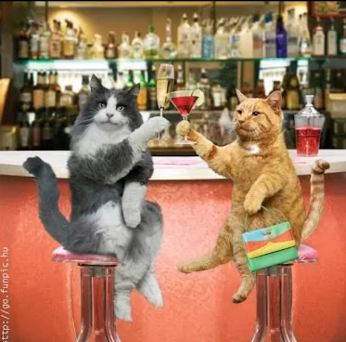
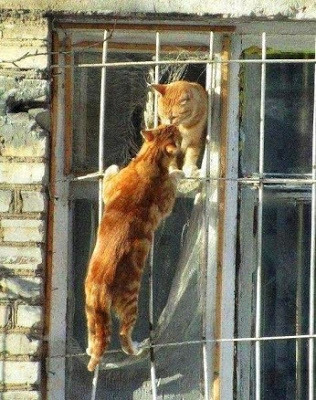
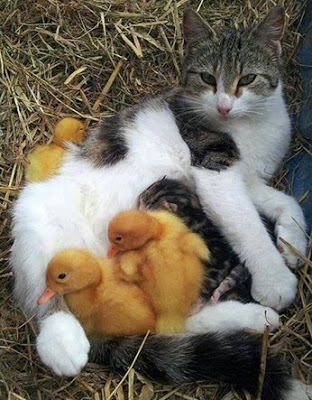

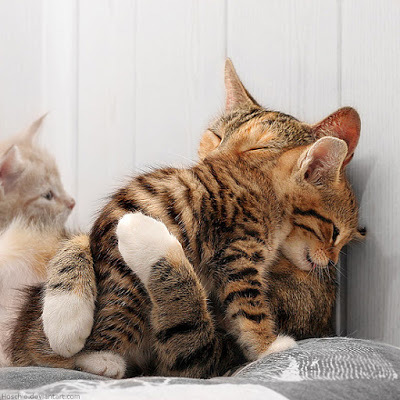
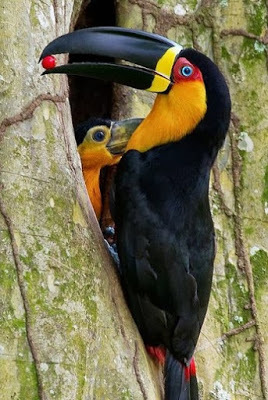



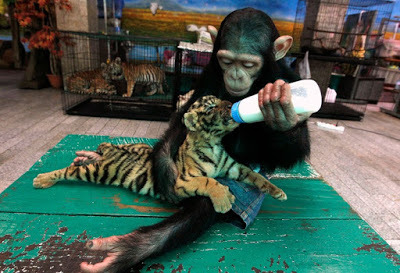
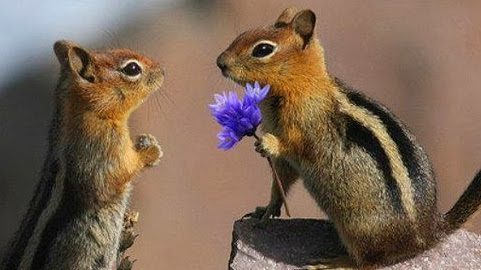

Clancy's comment: Pretty cute, eh?
I'm ...


Published on July 13, 2018 15:20
July 12, 2018
13 July 2018 - KURT FEARNLEY OAM – CHAMPION AUSSIE PARALYMPIAN
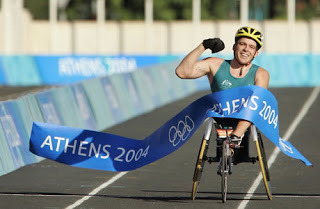
KURT FEARNLEY OAM– CHAMPION AUSSIEPARALYMPIAN -
G'day folks,
Welcome to some background on a man who I've found inspirational in so many ways, and I'd recommend that you watch the videos below.
With over a decade of experience, Kurt Fearnley’s wheelchair racing career is as impressive as it is extensive. He has won the Sydney Marathon 11 times, the New York Marathon five times, and posted victories in Paris, London, Seoul and Chicago. He has also won three gold, seven silver and three bronze medals across five Paralympic Games.

Born without the lower portion of his spine, Kurt took up wheelchair racing when he was 14-years-old. His indomitable spirit saw him go from pushing his wheelchair as fast as he could down the grass track at school athletics carnivals to pushing it the last five kilometres of the 2004 Paralympic marathon on a flat tyre to claim gold.

Unfortunately, Kurt’s 2008 Paralympic campaign was not the one he had dreamt of, winning silver in the 800m and 5000m and bronze in the 1500m, before defending his title and pushing to gold in the marathon. However, just two months later he won the New York marathon, becoming the first and only person to date in his division to win the race three times.

Kurt captivated the Australian public in 2009 when he successfully crawled the 96km Kokoda Trail in Papua New Guinea, and in 2011 he was chosen as a celebrity crew member on the winning yacht in the Sydney–Hobart Yacht Race.

In what has become one of the greatest rivalries in Paralympic sport, Kurt went head-to-head with Great Britain’s David Weir at the 2012 London Games. With the whole of the host country behind him, Weir was unstoppable, leaving Kurt with silver in the 5000m and bronze in the marathon. Painfully, just 0.01 of a second stood between Kurt and fulfilling his dream of winning three consecutive Paralympic marathons.
In 2013, Kurt won his ninth consecutive Oz Day 10km and was awarded the honour of delivering the Australia Day Address. Off the back of a successful 2013 came two major victories in 2014. Fighting a virus in the days before the Glasgow Commonwealth Games, Kurt crossed for silver in the 1500m, and in November he won his fifth New York Marathon.

Kurt was selected as co-captain of the 2016 Australian Paralympic Team, representing his country proudly in the 1500, 5000m, and marathon. During these Games, he was also elected to the International Paralympic Committee Athletes’ Council.
His pre-competition routine is to drink a double espresso and litre of sports drink, and to eat a banana.
QUICK FACTS
Disability Physical Impairment – Lumbar sacral agenesis
Sport Athletics
How acquired Congenital
Date of Birth March 23, 1981
Home Newcastle, NSW
OccupationAthlete
Started Competing1995
First Competed for Australia2000
Games ExperienceSydney 2000, Athens 2004, Beijing 2008, London 2012, Rio 2016
HeroesAndrew Dawes
Career HighlightsWinning gold in the marathon at the Athens 2004 and Beijing 2008 Paralympic Games
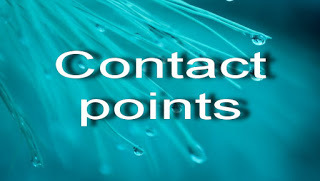
WEBSITE
VIDEO OF KURT
AUSTRALIA DAY ADDRESS

Clancy's comment: What a guy. I've heard him speak many times, and even after a grueling marathon, he has always been humble, articulate and inspiring.
Love ya work, Kurt!
I'm ...
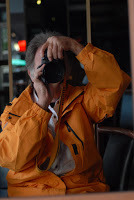

Published on July 12, 2018 15:30



